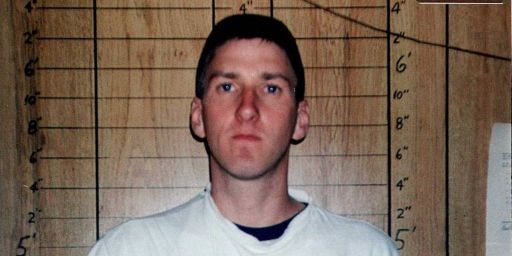There’s no doubting that in the 1990s, far-right and white nationalist organisations started publicly opposing federal institutions, but it was nearly unthinkable that this would lead to a terrible public attack. Unfortunately, the deadliest domestic terrorist attack in US history was carried out in Oklahoma City in 1995 as a result of this “Patriot” movement, as detailed in Showtime’s “Waco: The Aftermath.” Timothy McVeigh was at the epicentre of it all, and we now have all the information you need to learn more about him, his background, his ideals, and his crimes.
Who Was Timothy McVeigh?
Although Timothy “Tim” James McVeigh was the sole son of Noreen Mildred “Mickey” Hill and William McVeigh when he was born on April 23, 1968, he was quiet. He pretended to have been a playful child who retreated into himself as he grew older, only to later claim he was bullied in school throughout his adolescent years and as a result sought solace in fantasies. His interest in computers was unintentionally sparked by this, but despite the fact that he once succeeded in hacking into government networks for amusement, his grades and level of bookish knowledge weren’t excellent.
Therefore, it came as no surprise when Timothy decided to leave college to pursue his second passion for firearms, which his grandfather had first introduced to him while he was still a fairly impressionable young man. The fact is that he not only had aspirations of opening a gun store one day but also frequently carried a weapon to impress his classmates, which inevitably sparked his interest in gun rights. Then, after a brief stint as an armoured car guard, he voluntarily volunteered in the US Army at the young age of 20, hoping to gain more knowledge through hands-on experience with weapons.
Unsurprisingly, Timothy was a great gunner in the military, earning commendations like the Bronze Star, National Defence Service Medal, and Kuwaiti Liberation Medal. He was on his way to joining the Special Forces, but he opted to leave and was honourably discharged in 1991, after receiving numerous warnings for racial prejudice. The moment he started speaking out against taxation, restrictions on firearm permits, and speculations about government surveillance, it became clear he was a wholly far-right thinker.
In order to express his support for the Branch Davidians and to disseminate anti-gun control and extremism literature, Timothy even went so far as to travel to Texas during the Waco siege in early 1993. He claimed back then that “the government is afraid of the guns people have because they have to always be in control of the people.” “Once the guns are gone, you may do whatever you want to the people… I think our country is steadily transitioning to a socialist one. The people must get ready to fight themselves against government control as the government keeps getting more and more powerful.
Later, Timothy established himself at gun shows, joined the right-wing “Patriot” movement, engaged in drug use, developed into a radical, and spread anti-government views. The Gulf War veteran was also troubled by the Ruby Ridge siege, the Waco event, and the nation’s foreign policies, which led him to decide to take drastic actions with a few conspirators. On April 19, 1995, he car-bombed the Alfred P. Murrah Federal Building in an effort to spark a revolution against what he saw as tyranny, killing 168 people and wounding over 680 others.
How Did Timothy McVeigh Die?
Timothy believed his actions were “revenge,” but given the number of lives lost, the harm done, and the injuries sustained, the truth is that they were nothing more than violent, senseless domestic terrorism. After all, in addition to the fatalities, which included 19 children in the childcare centre on the second story of the building, there were also roughly 300 surrounding structures that sustained long-term, originally unrecoverable damage. Fortunately, the FBI was able to capture him soon after, and by the time October arrived, he had been charged with 160 state and 11 federal offences, including murder and the use of weapons of mass devastation.
Timothy once said, “To these people in Oklahoma who have lost a loved one, I’m sorry but it happens every day.” You’re not the first parent to lose a child, and neither are you the first grandparent to lose a grandson or a granddaughter. Every day, somewhere in the world, it takes place. I won’t enter the courtroom, ball up like a baby, and sob just because the victims want me to. He was subsequently found guilty of all federal offences due to his obvious lack of remorse, and on June 13, 1997, he was condemned to death by lethal injection; on June 11, 2001, he was put to death.
Timothy was 33 years old when he received the injection at the medium-security Federal Correctional Complex in Terre Haute, Indiana, at 7:14 a.m. after several unsuccessful appeals. When asked if he had any parting remarks, despite having previously said his only regret was not completely demolishing the federal building in the bombing, he remained silent.



